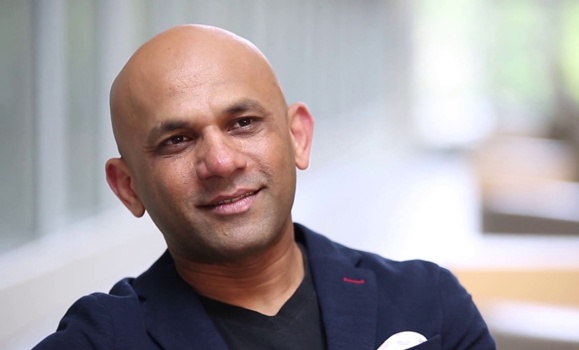COVID-19 has touched almost every country around the world since it emerged months ago. As of September 9, 2020, 27.6 million people have been infected with the SARS-CoV-2 virus, and there have been 898,000 deaths. But, a Dal scientist is hoping that there is a silver lining to this catastrophic pandemic.
Dr. Shashi Gujar, a scientist with the Department of Pathology at Dal, together with partners in France, Demark, Germany, the United States and India, is examining whether the immune response to SARS-CoV-2 could be repurposed as the next generation of cancer immunotherapy.
A built-in defense system
From the time you are born, your immune system helps protect you against viruses, bacteria and anything harmful. But why doesn’t it protect you against cancer?
It turns out that the immune system fails to recognize cancer as a threat. According to Dr. Gujar, this is where viruses like COVID-19-causing coronavirus can play a key role.
“We’ve figured out how to trick your coronavirus-specific T cells to think that your cancer is infected by the virus,” says Dr. Gujar. “The key is to do this without using the virus or actually causing the real infection.”
When a person becomes infected with SARS-CoV-2 coronavirus, their immune system recognizes the virus and activates a particular type of immune cells called “T cells.” These T cells act in a highly precise manner and kill only virus-harbouring cells. Multiple vaccines being tested internationally have shown a similar capacity to activate these coronavirus-specific T-cells.
Retraining T cells
These T cells can establish a memory response that maintains active protection against possible re-infection with the virus, which means that coronavirus-specific T cells can hunt for the virus inside the body, eliminate the areas where the virus replicates, and aid in the recovery from COVID-19.
Dr. Gujar and his team are trying to get these same T cells to go after tumours by getting the cancer cells to express the same identifying tags as the coronavirus-infected cells, and become the targets of the anti-coronavirus T cells.
“Once we know it works, this immunotherapy will actually be a straightforward process, and may be something we’ll be able to start using on patients sooner rather than later. This is a highly novel and practical strategy to harness virus-specific T cells against various types of cancers. That’s what makes it so exciting.”
According to Dr. Gujar, what makes this research truly unique is that due to infection or vaccination, the coronavirus-specific cells have the potential to be found in millions of individuals worldwide- making the use of this cancer immunotherapy useful for masses globally.
The power of partnerships
Dr. Gujar is quick to point out that this work would not be possible without the support of partners from around the world. Dr. Gujar and his international collaborators are continuing to learn more and more about the virus and are currently in the process of testing the coronavirus-specific tags (called as epitopes in scientific terms) that exist in different human populations. From there, they will prepare a cocktail of these tags that can be used in human clinics to cure cancers.
Dr. Gujar emphasizes his gratitude towards the local support via Dalhousie Medical Research Foundation (DMRF) without which this work could not have started. He believes that this pilipiliÂţ»-led global initiative promises to identify highly exciting cancer immunotherapy and is set to position us an international leader in this field. Moving forward, he is working with DMRF to garner necessary financial support and partnerships to pilipiliÂţ»fully bring this project to fruition.
Ěý
Dr. Gujar’s scientific article explaining this approach “Repurposing CD8+ T cell immunity against SARS-CoV-2 for cancer immunotherapy: a positive aspect of the COVID-19 pandemic” was recently published in the journal

